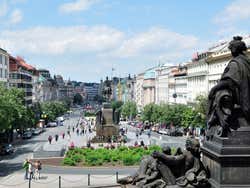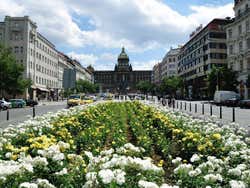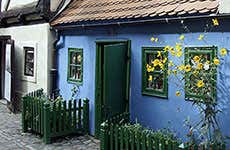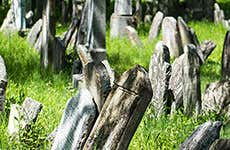
Wenceslas Square
Wenceslas Square has witnessed many recent historical events and is a place where many demonstrations and public gatherings take place.
Wenceslas Square looks more like a boulevard than a square. It is a very long rectangle measuring 2460 ft (750 meters) in length by 196 ft (60 meters) in width. The buildings that surround the square are mostly hotels, restaurants, bars and boutiques.
Its most famous building is the Prague National Museum, which was opened to the public in 1890.
A Historic Location
Many important events took place here:
- The proclamation of independence of Czechoslovakia was read in Wenceslas Square on 28, October, 1918.
- In 1969, the student Jan Palach set himself on fire to protest the invasion of the Soviet Union in Czechoslovakia.
- November 1989: a demonstration that was cruelly suppressed by the riot police gave way to a series of peaceful demonstrations, known as the Velvet Revolution. The result of this movement was the end of the Communist rule in Czechoslovakia.
Restaurants, Shopping and Nightlife
Nowadays, Wenceslas Square is a popular area for tourists to find accommodation. This is due to its great location in the heart of the New Town (Staré Město), its rich historic and cultural past, and its numerous bars, restaurants and shops.
In addition, if you would like to discover the city’s nightlife, we recommend going out in Wenceslas Square, which is renowned for its bars and clubs.
Prague’s three metro lines stop in Wenceslas Square, either at Mustek or Muzeum, making this square one of the easiest to get to and from.


Nearby places
Nové Město (22 m) Mucha Museum (324 m) National Museum (364 m) Museum of Communism (379 m) State Opera (415 m)

